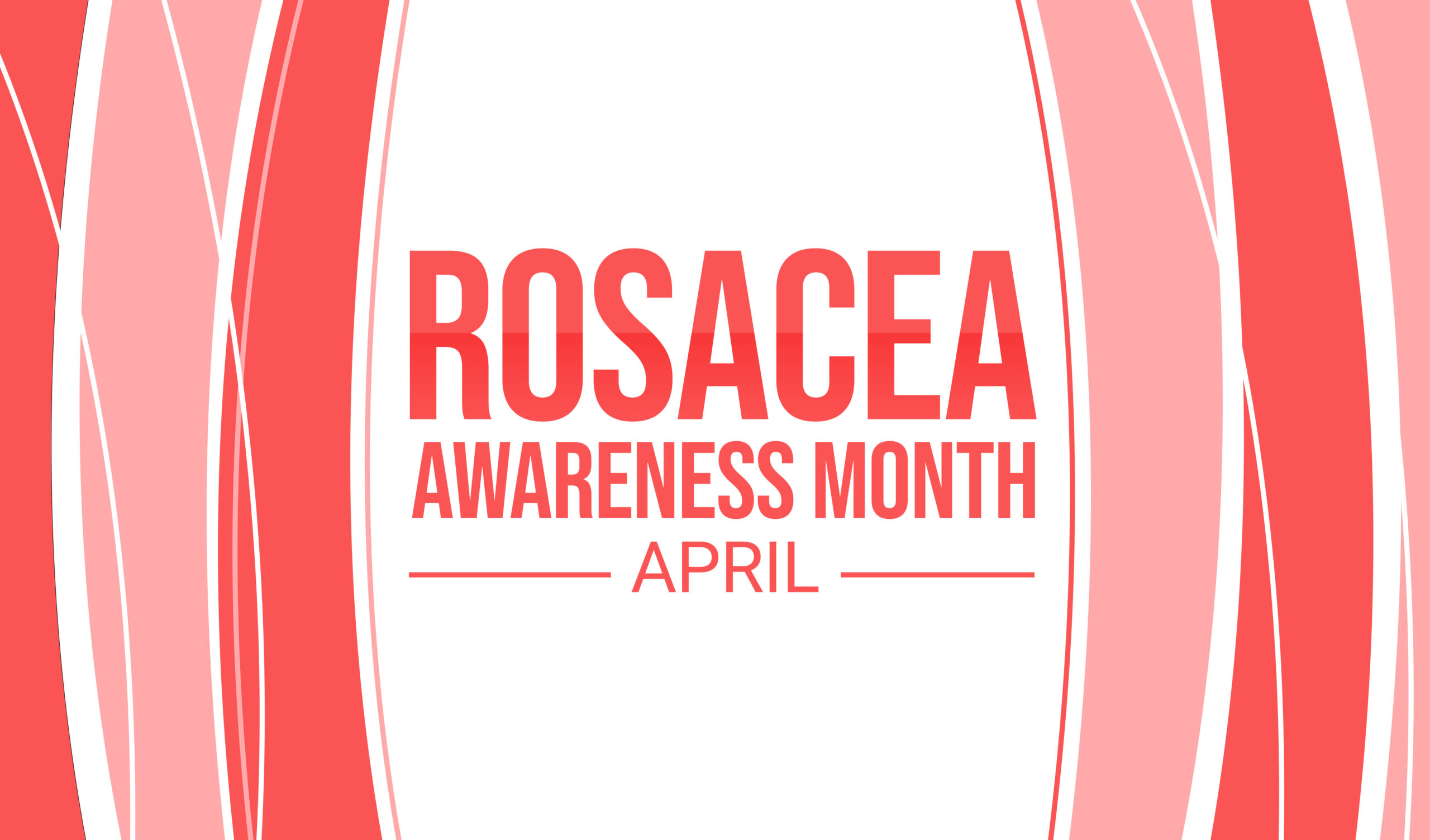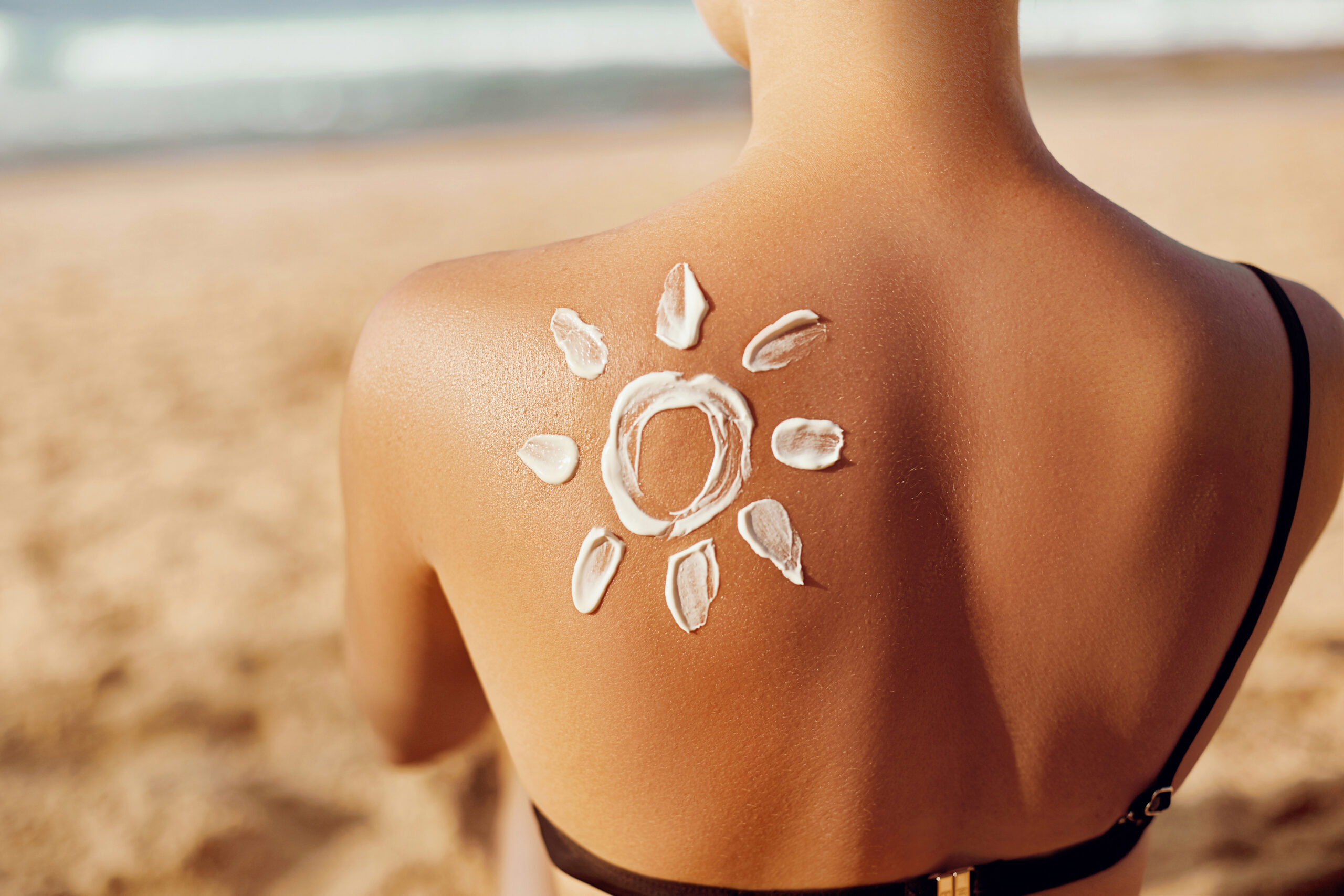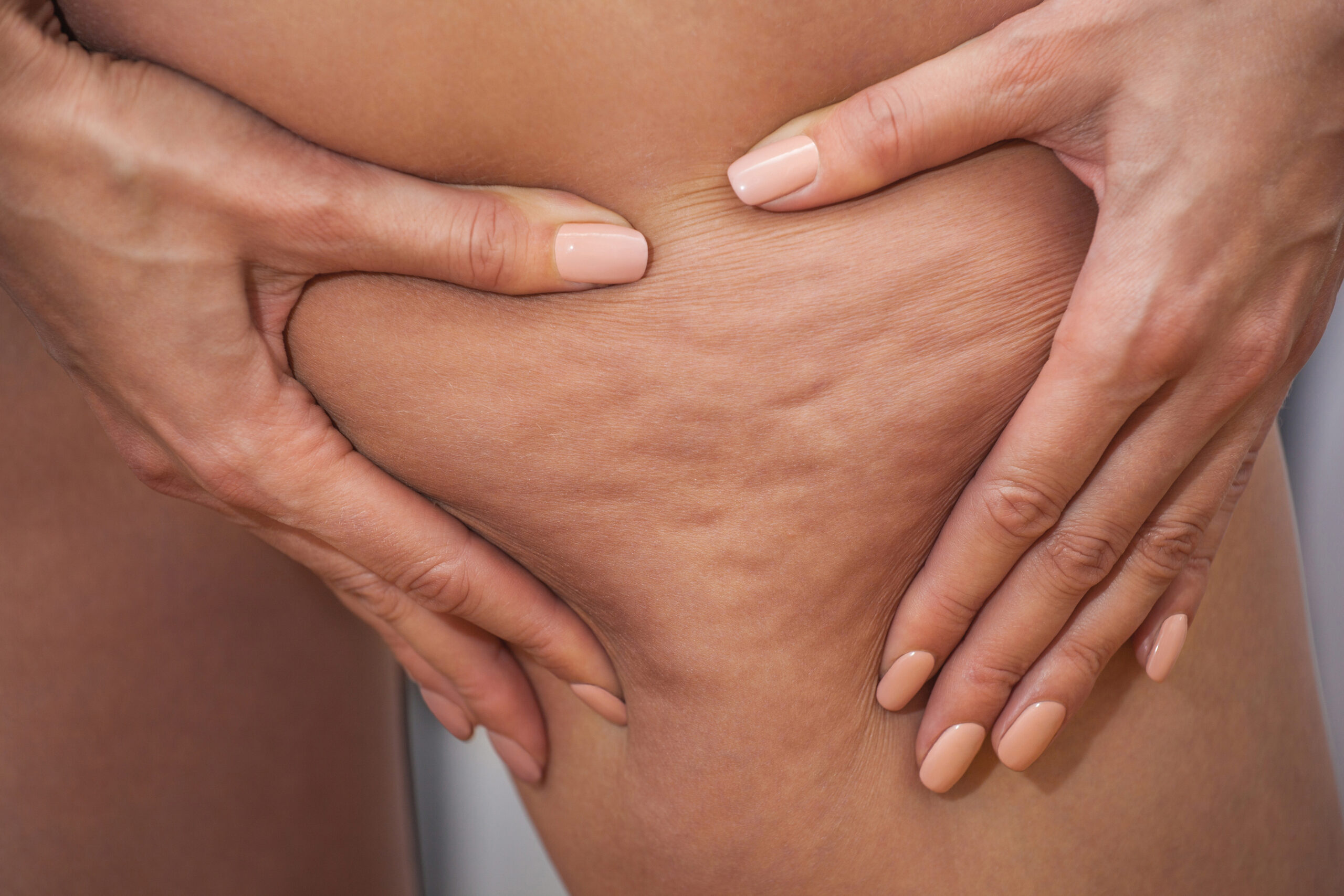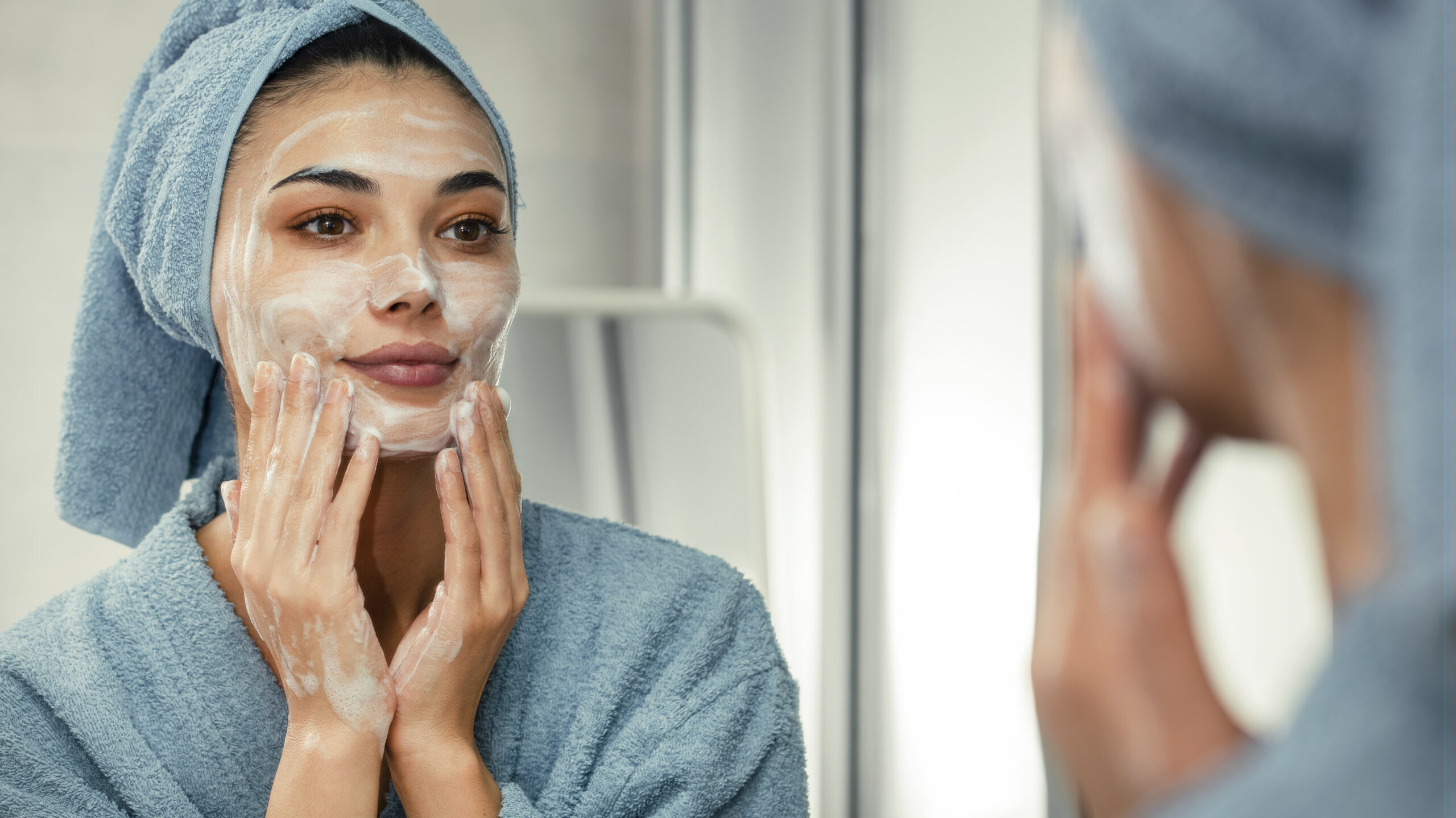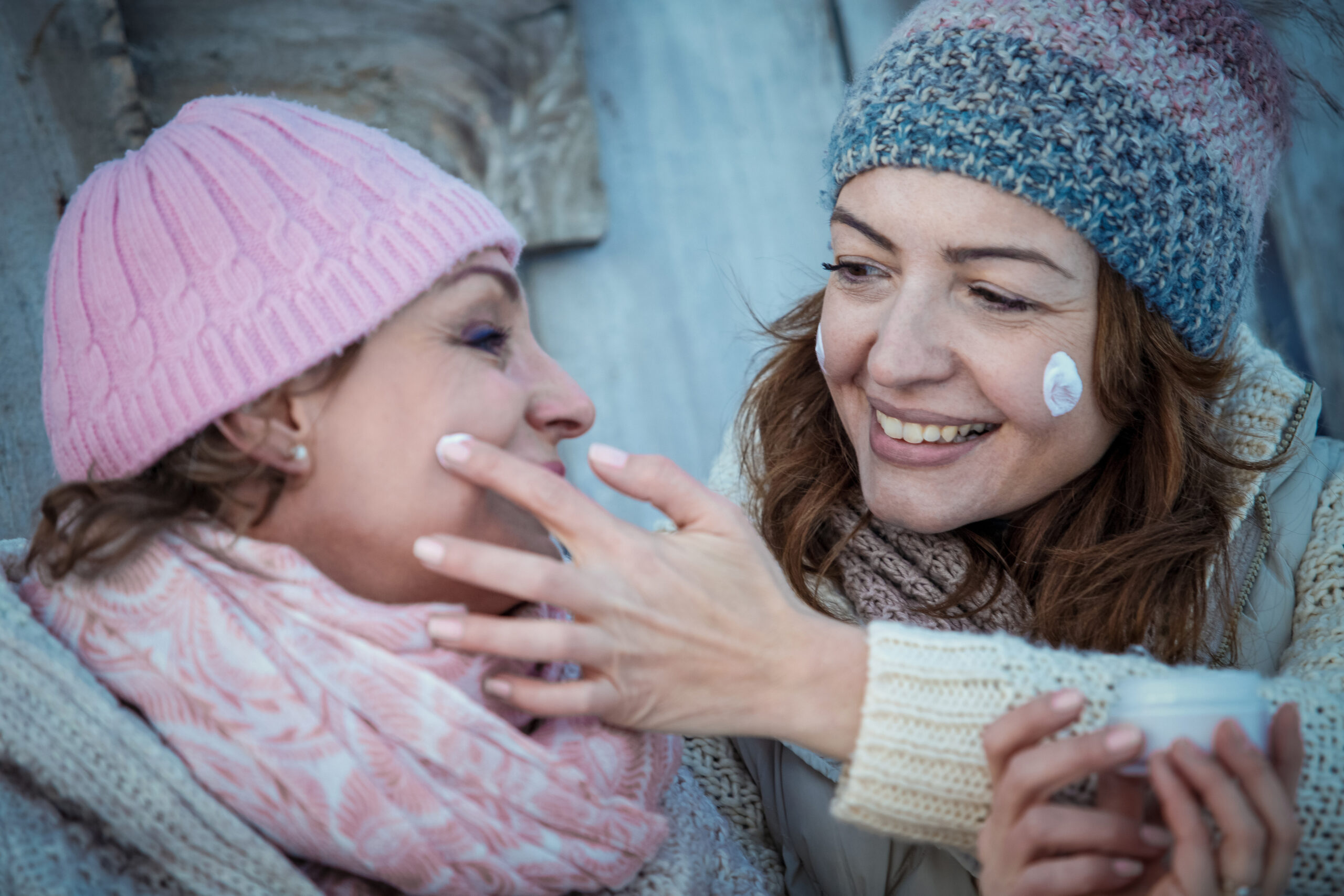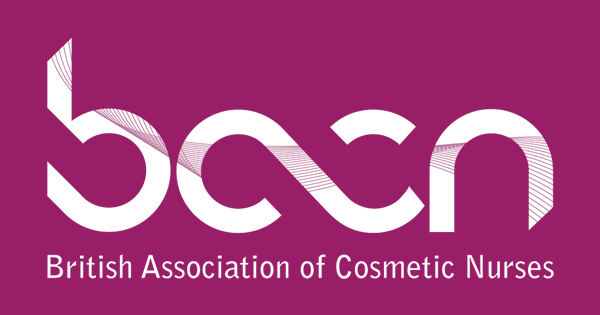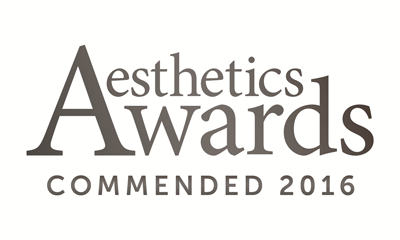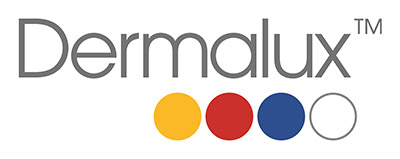In support of The National Rosacea Society (NRS) and Rosacea Awareness Month this April we set about creating a blog and downloadable guide to raise awareness of the condition and help spread the word on how to spot the signs and how to seek help before it gets worse.
There are millions of people in the UK and across the world suffering with rosacea, although the condition can develop in many ways and at any age, first diagnosis is most common between the ages of 30 to 50.
At Staffordshire Skin & Laser Clinic we are passionate about treating the signs and symptoms of rosacea with proven treatments, advanced medical skincare and combining nutritional and lifestyle advice. We are an accredit treatment centre of the ARAUK Acne and Rosacea Association UK which is a charity created by Professor Tony Chu who is a leading dermatologist within this field.
What is Rosacea?
Rosacea is a very common, long term, chronic condition that commonly affects the face, eyes and nose. The earliest signs of rosacea are often overlooked because people assume, they are temporary and will go away, however if left undiagnosed and untreated can lead to gradual changes in the physical appearance of the skin, nose and eyes resulting in long term psychological implications for the sufferer.
The condition may first present itself as flushing and redness on the cheeks, nose, chin or forehead. Over time, left untreated the symptoms become more persistent with a permanent redness, lumps, bumps and visible blood vessels. With more severe cases, often in men, skin thickening which commonly affects the nose referred to as Rhinophyma, where nasal skin thickens and becomes deep purplish-red in colour. In turn making the nose appear larger and sometimes deformed. This skin thickening can also occur on the cheeks, chin and forehead. And with many rosacea sufferers the eyes are also affected, feeling irritated and appearing watery or bloodshot.
It’s understandable that many suffering with rosacea have reported to having low self-esteem and a lack of confidence. Although there is no cure for rosacea, with the correct diagnosis, a course of treatment, a few lifestyle changes and maintenance the symptoms can be relieved.
What factors may contribute to developing Rosacea?
Although the causes of rosacea are unknown there are certain contributing factors, both heredity and environmental that may make you more likely to develop this condition.
1) Age – You are more likely to develop rosacea between the age of 30 to 50.
2) Skin type – Fair skin, blonde hair, blue eyes.
3) Genetic predisposition – Family history of the condition.
4) Gender – more prevalent in women, however for men who suffer this condition they may experience more severe symptoms.
5) High prevalence of the skin mite demodex and the bacteria it carries Bacillus oleronius.
What trigger factors are associated with Rosacea?
As well as certain factors that may increase your predisposing to developing this long term, chronic conditions there are also several TRIGGER FACTORS that may exacerbate your condition. The first step in managing your Rosacea is to recognise what your trigger factors are. A good understanding of your trigger factors will help you to reduce your flare ups, prevent your condition from getting worse and allow for maximum benefit from prescribed medications and treatments.
A few of the common trigger factors may include sun exposure, stress, alcohol, eating spicy foods and medications.
Once you have an idea of the factors that may be contributing to your rosacea the next step is confirmation. One of the most effective ways to do this is to keep a diary, this will detail for example what foods you were eating, beverages drinking, weathers exposed to, activities undertaken that lead to an increase of your symptoms including facial redness and flushing and how long your symptoms lasted for.
What changes can I make?
Here are a few examples of small changes you can make once you have identified your trigger factors;
SUN EXPOSURE
Even just a few minutes of sun exposure can trigger redness and flushing which can remain for hours post exposure. Here are a few suggestions on how protect the skin in the sun;
• Protect the skin with a broad-spectrum SPF 30 – Mineral based opposed to chemical based as they are designed for sensitive skins and will help reduce irritation.
• Stick to shade and cover up with a hat and sunglasses.
• Avoid mid-day heat and direct sunlight.
STRESS
A common experienced problem that affects many rosacea sufferers is stress. Whether it’s down to work, family or just simply daily commitments, taking steps towards recognising and addressing it before it escalates will be a blessing to your skin. Methods to help deal with day-to-day stress;
• Meditation
• Low level fitness such as Yoga.
• Sleep
• Maintaining a healthy diet.
ALCOHOL
If alcohol is one of your trigger factors, then this will need to be addressed to control your symptoms. Often a specific alcohol triggers your flare ups more than others, for example red wine can be one of the biggest culprits.
• Get support from friends and family, make them aware why you are choosing not to drink or cut down your intake.
• Alcohol free days, nights out and dinner parties.
• Substitute to low alcoholic drinks.
• Spice things up with Mocktails, non-alcoholic cocktails.
• Stick to alcoholic beverages that cause minimal reaction.
• Limit your drinks to 1-2 and consume water between.
As well as the improvements in your skin its worth remembering there are many other benefits including health, physical and mental and financial benefits.
SPICY FOODS
Spicy foods may be a problem for some rosacea sufferers triggering flair-ups. Consider avoiding hot spices such as pepper, paprika, cinnamon. Other foods can trigger flair-ups, keep a diary of what you have consumed to identify what may be contributing to your symptoms.
MEDICATION AND MEDICAL CONDITIONS
Health conditions and medications can stimulate a flushing response and trigger rosacea flare-ups, we recommend discussing signs and symptoms with your doctor. The following conditions should be ruled out or treated to help bring symptoms under control;
• Hot flushes associated with menopause.
• Seborrheic dermatitis
• Allergies
• Systemic diseases, such as high blood pressure.
• Fevers, coughs and colds.
• Vasodilator drugs are used to treat cardiovascular disease.
• Long-term use of topical steroids.
Doctors may prescribe topical or oral medications to reduce or clear up redness and spots. If you feel that your medication is linked to your Rosacea please seek advice form your GP prior to discontinuing your treatment as an alternative medication may be recommended.
What we can do at Staffordshire Skin & Laser Clinic
Whist there is no cure for rosacea, managing the symptoms is attainable with advanced medical therapies. With the varying signs of Rosacea, it is important to be correctly diagnosed in order to find the best combination of treatment for the individual.
Here at Staffordshire skin and laser clinic on consultation our practitioners will conduct an assessment based on trigger factors, prescribed medications, skin care routine and treatments received in the past. This will enable us to look at the different factors contributing to rosacea and how best to treat. This may include dietary and hormonal support, prescription skin care or medical grade treatments such as;
Intense pulse light (IPL) is an effective treatment for Rosacea as the intense pulse light reduces flushing and redness.
The pulsed light directly targets the underlying blood vessels, heating them to a point where they will be destroyed and quickly reabsorbed by the body. Overtime this gradually reduces redness and vascular inflammation associate with Rosacea.
A course of 5 treatments is recommended every 4 weeks, with a maintenance treatment recommended every 3 to 6 months.
Dermalux Light Therapy is a clinically proven technology and medically recognised for the treatment of many skin conditions including rosacea. In clinic we use Dermalux LED light therapy to counteract all symptoms of rosacea; including redness, inflammation, skin sensitivity, papules and pustules, providing an immediate relief for sufferers. Red and near infra-red light are anti-inflammatory and aid the skins natural healing response, whereas blue light is anti-bacterial and great for treating pustules and papules.
A course of 10 to 15 treatments is recommended 2 to 3 times a week, with maintenance treatments recommend once to twice per month.
HydraFacial Rozatrol Protocol for mild Rosacea and general skin health is a multi-step treatment that uses patented technology to cleanse, exfoliate, extract and treat the skin. It helps minimize the appearance of skin redness and dryness, prevents excess sebum build up and helps reduce the appearance of blood vessels on the skin.
A course of 12 treatment is recommended, one a week for 6 weeks continuing with 1 a month for ongoing maintenance.
Zo Normalising Kit for Red, Sensitive Skin – A medical grade skincare, home system that works by normalizing the visible symptoms of rosacea. The normalising kit is made up of 6 products used morning and night that reduce inflammation and skin redness, whilst antioxidants protect the skin from daily irritants that can aggravate sensitized skin. The ZO range promotes healthy skin function and the kit also works to reduce oil, gently exfoliate dry skin, smooth skin texture and even skin tone.
Rozatrol – Most rosacea patients report using more than one medication to manage the condition. Rozatrol is a daily treatment serum with a breakthrough combination of ingredients that relieves multiple symptoms know to be associated with the condition all in one tube.
Mirvaso Brimonidine – is a prescriptive medication and the only FDA-approved treatment developed and indicated for persistent, no transient, facial redness of rosacea. When applied to the skin it works by causing blood vessels to contract. It is prescribed only under medical supervisor and can be prescribed in clinic by our nurse practitioner.
Mineral Makeup – Treatments and medical therapy can address the underlying physical aspects of rosacea, whereas make up can help to improve the look of the skin and boost confidence. In clinic we opt for a mineral make up range Jane Iredale that offers long lasting coverage, protection and can visually correct the redness and even skin tone.
Nutritional supplements – We endorse advanced nutritional programme in clinic which is a premium pharmaceutical grade supplementation and on consultation a nutritional assessment is included where our practitioners look at any vitamins that can support treatment for rosacea. Supplementing Vitamin A and C is known to have benefits such as; reducing redness, inflammation and stimulating new collagen.
We hope you found the information useful, if you have any further questions feel free to contact us on 01782 922300 or email myskin@ssal.uk.
References
National Rosacea Society, 1996-2019, accessed 4th April 2019, <https://www.rosacea.org/>
ARAUK Acne and Rosacea Association UK, 2018, accessed 4th April 2019, <https://arauk.co.uk/>
NICE National Institute of Healthcare and Excellence, 2018, accessed 4th April 2019 <https://www.nice.org.uk/>
NHS National Health Service England, 8th July 2016, accessed 4th April 2019, <https://www.nhs.uk/conditions/Rosacea/>
